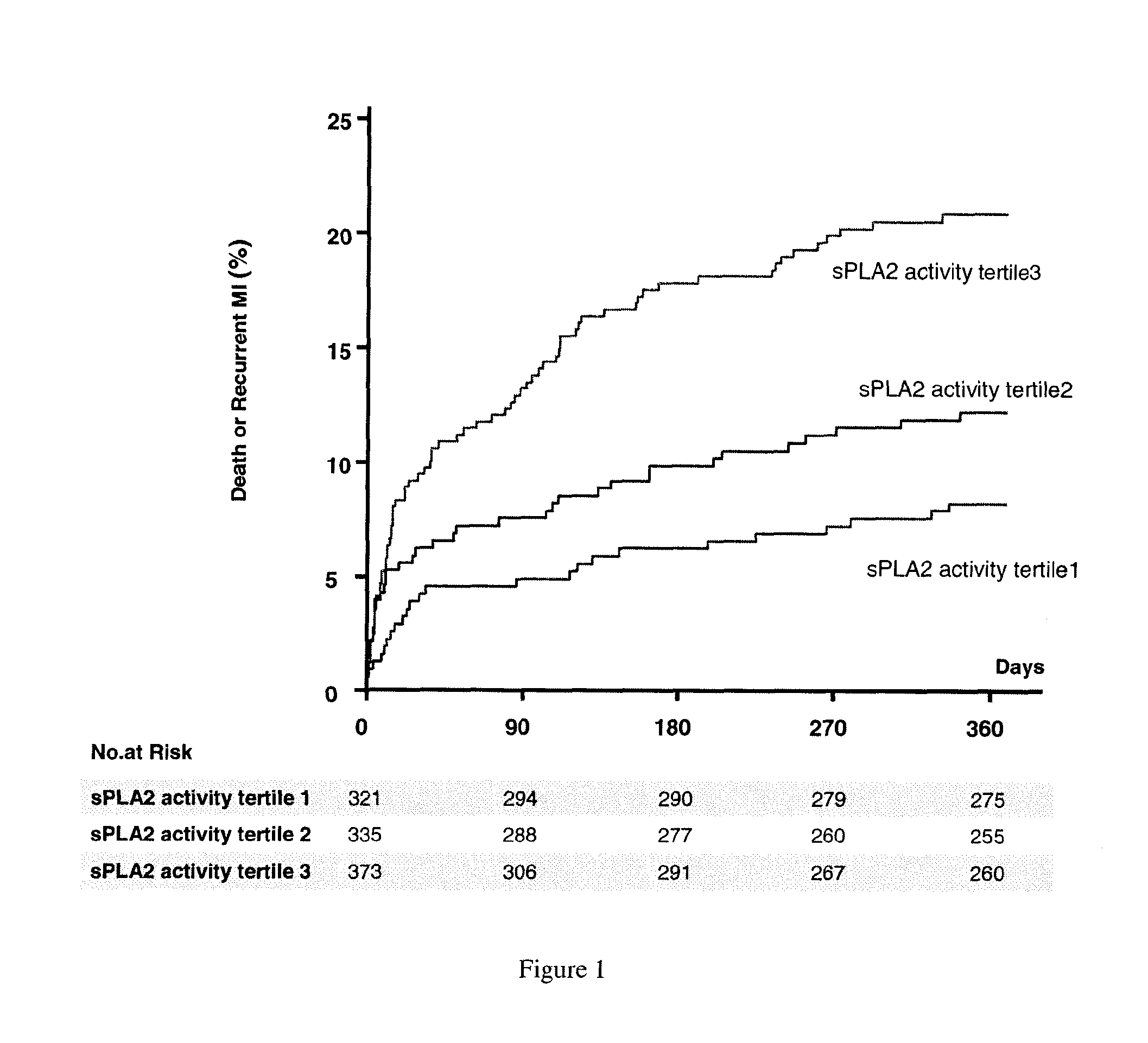sPLA2 IIA Polymorphism Analysis for the Diagnosis/Prognosis of a Cardiovascular Disease/Event
a cardiovascular disease and polymorphism technology, applied in the field of spla2 iia polymorphism analysis for the diagnosis/prognosis of a cardiovascular disease/event, can solve the problems of poor diagnosis, approximately 40% of those initial events go unnoticed by the patient, and cardiovascular diseases (cd) remain the primary cause of morbidity and mortality worldwide, and achieve the effect of reducing the risk of having
- Summary
- Abstract
- Description
- Claims
- Application Information
AI Technical Summary
Benefits of technology
Problems solved by technology
Method used
Image
Examples
examples
Methods
Study Population
[0084]The population and methods of the French registry of Acute ST-elevation and non-ST-elevation Myocardial Infarction (FAST-MI) have been described in detail elsewhere.11 Briefly, the objective of the FAST-MI registry was to gather complete and representative data on the management and outcome of patients admitted to intensive care units for definite acute MI, irrespective of the type of institution to which they were admitted (i.e., university hospitals, public hospitals, or private clinics). All consecutive adult patients (≧18 years) were included in the registry if they had elevated serum markers of myocardial necrosis higher than twice the upper limit of normal for creatine kinase, creatine kinase-MB or elevated troponins, and either symptoms compatible with acute MI and / or electrocardiographic changes on at least two contiguous leads with pathologic Q waves (≧0.04 sec) and / or persisting ST elevation or depression >0.1 mV. The time from symptom onset to...
PUM
| Property | Measurement | Unit |
|---|---|---|
| total volume | aaaaa | aaaaa |
| total volume | aaaaa | aaaaa |
| pH | aaaaa | aaaaa |
Abstract
Description
Claims
Application Information
 Login to View More
Login to View More - R&D
- Intellectual Property
- Life Sciences
- Materials
- Tech Scout
- Unparalleled Data Quality
- Higher Quality Content
- 60% Fewer Hallucinations
Browse by: Latest US Patents, China's latest patents, Technical Efficacy Thesaurus, Application Domain, Technology Topic, Popular Technical Reports.
© 2025 PatSnap. All rights reserved.Legal|Privacy policy|Modern Slavery Act Transparency Statement|Sitemap|About US| Contact US: help@patsnap.com



